#international anthem
Text

Thandi Ntuli with Carlos Niño, Rainbow Revisited, (LP, CD, Digi album), IARC0073, International Anthem, 2023


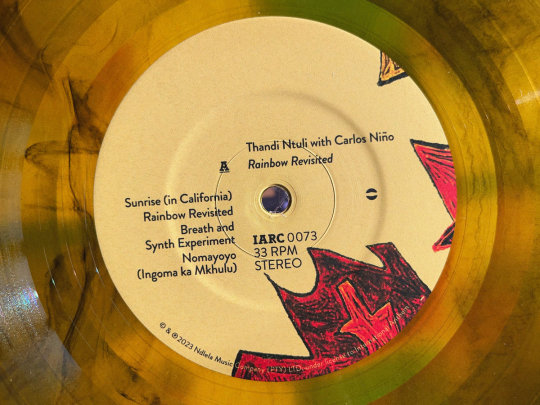



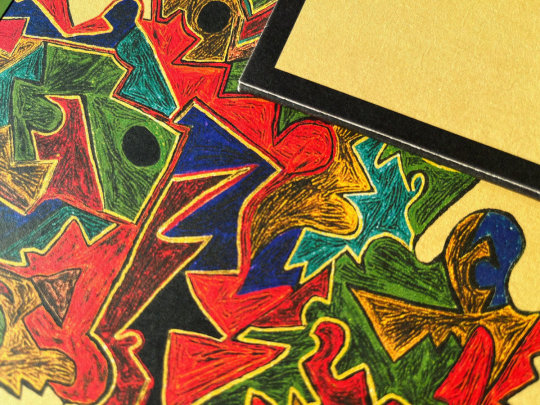






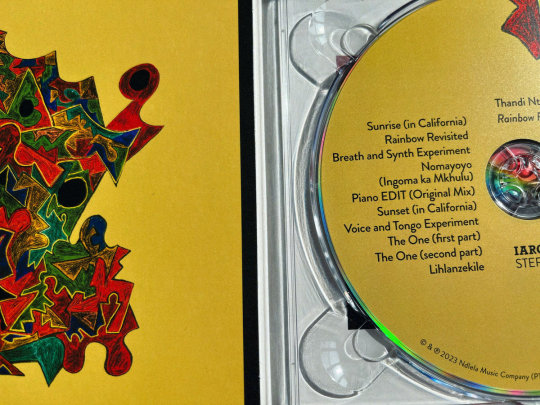
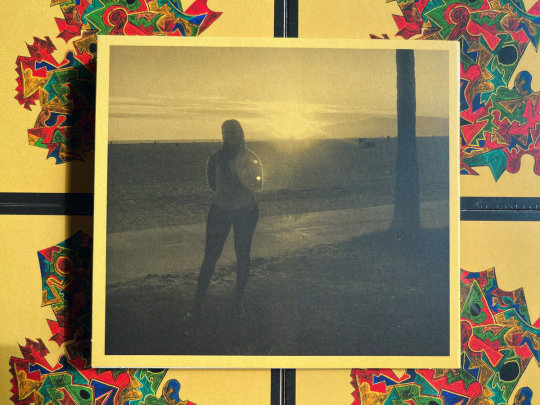
Thandi Ntuli: piano, synthesizer, tongo, voice
Carlos Niño: cymbals, percussion, plants
Recorded by Andy Kravitz at Studio 4 West, Venice Beach, CA, August 2019
Additional Recording by Carlos Niño
Produced and Mixed by Carlos Niño
Mastered by David Allen and Dave Vettraino
Cover Art by Shabaka Hutchings
Poem by Thandi Ntuli
Insert Photo by Thandi Ntuli
Graphic Design and Layout by Craig Hansen
#graphic design#art#music#poetry#music album#vinyl#cd#drawing#cover#back cover#thandi ntuli#carlos niño#andy kravitz#studio 4 west#david allen#dave vettraino#shabaka hutchings#craig hansen#international anthem#2010s#2020s
23 notes
·
View notes
Text
Ight We all love to Meme DESTROYA 'cause like... ah ah ah but can We take a second to appreciate how RAD some of the real lyrics are like?!?! "Now show them what You got, You children of the gun, they don't hide & We don't run, against the sun We're the enemy!"
Like holy shit that's... that's just badass
Oh and the drums at the start are apparently sampled from like a ancient hindu Indian like festival appeasing a god of choas & destruction!?!? like! HELP
#destroya#danger days the true lives of the fabulous killjoys#my chemical romance#mcr#my chem#danger days#party poison#fun ghoul#jet star#kobra kid#unofficiall bad bitch anthem#International anthem#gerard way#mikey way#frank iero#ray toro
153 notes
·
View notes
Text

Rob Mazurek Exploding Star Orchestra
— Lightning Dreamers. 2023 : IA.
! listen @ Bandcamp ★ buy me a coffee !
#jazz#soul jazz#electronic music#rob mazurek#Rob Mazurek Exploding Star Orchestra#2023#international anthem#jeff parker#craig taborn#improvised music#2020s#2020s jazz
3 notes
·
View notes
Text
Thandi Ntuli with Carlos Niño - Rainbow Revisited
Liner Notes by Thandi Ntuli:
I travelled to Los Angeles and the USA for the first time in 2019. Although I had not met Carlos in person, we connected via Instagram where he saw a video of me playing a piano motif (titled ‘The One’ in this sequence) that he really liked and expressed a wish to record. This was around 2017. We tried a few times to get me over to Los Angeles, but the timing was always off. Through a performance organised by a creative collective called The Nonsemble at The Ford Theatre we finally got the opportunity to meet, play together and subsequently go into studio to record some improvisations as he guided the recording process.
Having been aware of some of his work – in particular his collaborative projects as Carlos Niño & Friends, as well as with his friend and long-time collaborator, Miguel Atwood-Ferguson – I knew that, with Carlos as producer, the artistic direction of the album would likely take me to a place I’d never considered going. A fact that had me both curious and terrified (as one tends to be when stepping into the unknown) Lol!
Initially keen to record the song that he had seen/heard me play on Instagram, our performance a few days before the session drew him to the song Rainbow off my sophomore album, Exiled (2018). On that zen-like California afternoon in Andy Kravitz’s cozy studio in Venice Beach, he encouraged me to play around with various iterations of Rainbow. “Try it this way”, “How about adding that?”, “Can you breathe into the mic?”, “What if you focus on the last section?”, and many other explorations that eventually went through a few cuts, edits, yays and nays to become this body of work. Rainbow Revisited was birthed through that session, another session a couple of days later, and a series of many small synchronicities that led up to that moment.
A particularly special moment for me was when he invited me to play something from home, which lent itself to me recording a song originally written by my grandfather that we often sing when at family gatherings. The song is called Nomayoyo.
So much has happened since that session in late 2019. Many changes in our personal and collective universes. Losses and gains, births and transitions into the next life, Mother Nature’s ever-constant cycles reminding me that through all the chaos there remains, just beneath, this perfect order in Her ebb and flow. And most importantly, reminding me to feel for Her and to listen.
She speaks!
If Rainbow in my initial birthing of it, expressed a discontent with what we have accepted as freedom in South Africa and, possibly, around the world, I’d like to think that Rainbow Revisited is some kind of a response. Where the idea of ‘the rainbow nation’, with all the baggage it carried, had hijacked the innocence and mystical nature of a rainbow, I now reclaim its meaning through going back, going inward, healing, and rebuilding with the hope of a less heart-breaking and more fulfilling tomorrow.
Lihlanzekile!
Thandi Ntuli: Piano, Synthesizer, Tongo, Voice
Carlos Niño: Cymbals, Percussion, Plants
Recorded by Andy Kravitz at Studio 4 West, Venice Beach, California, August 2019.
Cover Art by Shabaka Hutchings.
Graphic Design and Layout by Craig Hansen.
#Bandcamp#Thandi Ntuli#Carlos Niño#piano#south africa#jazz#international anthem#female vocal#spiritual jazz#2023
4 notes
·
View notes
Text
youtube
Here's Bolivian-born singer and multimedia performer Ibelisse Guardia Ferragutti and Chicago expat jazz drummer Frank Rosaly's "DESTEJER," from MESTIZX, their debut full-length album as co-composers, arrangers, and musicians, due May 3 on International Anthem / Nonesuch Records. The video was filmed near Ferragutti’s hometown in Cochabamba, Bolivia, by director Espectador Domesticado.
#ibelisse guardia ferragutti#frank rosaly#destejer#mestizx#bolivia#jazz#international anthem#nonesuch#nonesuch records#Youtube
2 notes
·
View notes
Text
6/21/23.
jaimie branch (born in NYC - lived between Chicago and Brooklyn) was a child trumpet prodigy. She studied at the New England Conservatory and had been a fixture on the avant-garde jazz scene since. And unfortunately we lost her nearly a year ago.
International Anthem (Chicago, Illinois) is releasing her final album on the anniversary of her death.
And while I'm not a regular fan of experimental jazz, "take over the world", sounds more like punk-jazz to me. It reminds me of the sound and energy of black midi.
She performed with her bands Anteloper and Fly or Die.
7 notes
·
View notes
Text
It's time for Beginnings, the podcast where writer and performer Andy Beckerman talks to the comedians, writers, filmmakers and musicians he admires about their earliest creative experiences and the numerous ways in which a creative life can unfold.

On today's episode, I talk to musician and composer Rob Mazurek. Originally from Jersey City, Rob started playing trumpet and cornet in high school after his family moved to Naperville, Illinois. He first learned the foundations of improvised music while studying jazz theory and practice with David Bloom at the Bloom School of Jazz in Chicago, and then became a mainstay of Chicago jazz in the 1980s. In 1994, Rob formed the Chicago Underground Collective with guitarist Jeff Parker and a cast of revolving players, which in turn birthed Isotope 217, both groups releasing albums on the seminal label Thrill Jockey. In the decades since then, Rob founded the Exploding Star Orchestra, has earned numerous commissions and awards, and in general has created more music and art than a short bio can properly elucidate. Earlier this spring, Rob's most recent work for Exploding Star Orchestra, Lightning Dreamers, was released on International Anthem, and like everything else Rob creates, it's wonderful!
I'm on Twitter here and you can get the show with:





Permalink
RSS Feed
Facebook
#beginnings#rob mazurek#jazz#chicago#chicago underground collective#isotope 217#thrill jockey#exploding star orchestra#international anthem
3 notes
·
View notes
Text
youtube
Los Angeles, CA -- Jeremiah Chiu will be releasing his new record In Electric Time on September 29 via International Anthem. This week, he's released the title track with an accompanying music video. The 4.5 minute track is just a peek into the wondrous soundscapes the album will encompass. "In Electric Time" gives us a taste of the lush textures and organic compositions melding together. There's a natural curiosity that oozes from the track that takes us along Chiu's journey of seeing what's possible. It's a track that perfectly captures awe and creativity - of doing something new with historical technology.
In Electric Time was birthed from Chiu's visit to the Vintage Synthesizer Museum (VSM) in Highland Park on June 29, 2023. After exploring and experimenting with the museum's vast array of synths, Chiu recorded this album in just two days and also edited to completion in the following two days. You can read more about the creation of the record here.
In Electric Time by Jeremiah Chiu
Connect with Jeremiah Chiu:
Official Site | Instagram
#jeremiah chiu#international anthem#in electric time#los angeles#electronic#experimental#synth#Youtube
2 notes
·
View notes
Text
Tom Skinner Interview: Vessels for Music to Be Heard
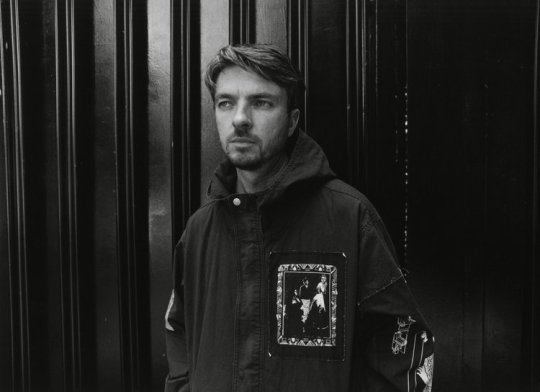
Photo by Alex Kurunis
BY JORDAN MAINZER
From the now-defunct jazz greats Sons of Kemet to best-ever Radiohead-adjacent project The Smile, Tom Skinner has not-so-quietly been one of the most versatile drummers of the past half-decade. Though he previously released his own music under the moniker Hello Skinny, earlier this month, Skinner shared his first album under his own name, Voices of Bishara (Brownswood/International Anthem/Nonesuch). The record doesn’t just exemplify Skinner as a player, but encapsulates his imaginative spirit as a listener and reinventor.
Throughout the COVID-19 lockdowns, Skinner listened repeatedly to Abdul Wadud’s 1978 solo album By Myself, privately pressed on Wadud’s label, Bishara. The Arabic name loosely translates to “the bringer of good news;” as lockdowns were lifted, vaccines administered, and live shows returned, it felt an appropriate word to reflect the genesis of what would become Voices of Bishara. A few years back, Skinner was invited to do a Played Twice session at London’s Brilliant Corners, wherein artists improvised in response to a classic album played through the venue’s audiophile system. That night, the album was Tony Williams’ Life Time; Skinner chose cellist Kareem Dayes, tenor saxophonists Nubya Garcia and Shabaka Hutchings, and bassist Tom Herbert. They had such natural chemistry that Skinner was inspired to write an album’s worth of new music, which he and the other four recorded live.
Voices of Bishara is far from a traditional jazz album, though, as Skinner returned to the recordings and edited between the instruments like his favorite disco and house producers would do. The result is an album with a tremendous sense of clearance, contrast, and opportunity for the individual players to shine. The muted, melancholy “Bishara” starts with just cello and bass before saxophone and rolling drums enter. “Red 2″, a response to Williams’ “Two Pieces Of One: Red” from Life Time, is shadowy, though Garcia’s flute shines through. Cello and chirping saxophone converse on “The Day After Tomorrow”, with Skinner’s drum rolls underneath the sighs of the woodwinds. “The Journey” and “Voices (Of The Past)” have a bit more of a groove and sway to them, Skinner’s drumming limber and snapping like a more traditional jazz or even boom bap beat. Voices of Bishara is more a retrospective of Skinner’s artistry and curatorial voice than a debut, let alone an assured mid-career album.
I emailed Skinner some questions about Voices of Bishara last month, touching on the album(s) that inspired it, responding to existing music, and composition. Read his responses below, edited for clarity.

Photo by André Baumecker
Since I Left You: Why do you think you found yourself listening to Abdul Wadud's By Myself during COVID so much? What about it resonates with you?
Tom Skinner: There’s a purity to the record. It’s a very direct and deeply personal piece of work. When you’re listening to it, it’s just you and him, no overdubs or studio trickery beyond the odd edit here and there. He’s talking directly to you, and I found that very refreshing and inspiring. In terms of the pandemic, looking back on it, I think maybe I took some solace in that level of intimacy at a time when we weren’t able to interact with other people as much as we were accustomed to. It’s also just a fucking cool record, and his playing on it is absolutely incredible. It’s loose and free with some pretty far-out improv on there but also incredibly melodic and rhythmically very interesting and groovy, too. Somehow, he manages to encompass all of my favorite things about music in one clear and concise statement.
SILY: What was your first experience or relationship with Tony Williams' Life Time?
TS: I’ve been a fan of Tony’s playing from the first time I heard him on the classic Miles Davis quintet records of the 1960’s. His own records from that time, though, always seemed a little more challenging and experimental. I first heard Spring (his second for Blue Note), and it definitely took me a while to appreciate what was going on, but as an aspiring young jazz musician, it was inspiring to hear how he was pushing himself and the music into new directions on those recordings. The thing I love about Life Time in particular is the unusual instrumentation and the fact that each track features a different combination of players. Tony doesn’t even play on the final tune. Even by today’s standards, that feels ahead of its time.
SILY: When playing for the Played Twice session and this album, why did you specifically choose Kareem, Nubya, Tom Herbert, and Shabaka?
TS: The personal connections and friendships between myself and the people I work with are at the heart of all my projects and collaborations, and this record is no exception. I have known everybody on the record for a long time, and we have a deep and rich history of performing together in different contexts. Getting this specific group together came at a time when we were all playing regularly at Brilliant Corners in various combinations, often for the Played Twice sessions. What attracted me to this particular combination of personalities and players was the scope for orchestration that it presented: Kareem’s cello and Tom’s double bass is a small string section, and Shabaka and Nubya’s tenor saxophones are the wind section, with the added possibility of them doubling on either clarinets or flutes, respectively, and then me on percussion. I also wanted to allow the musicians as much space and freedom as possible within the framework of the songs and, although there are “featured” players on certain tracks, the music was written with a collective and egalitarian approach to improvisation in mind.
SILY: "Red 2" is about a quarter of the length of "Two Pieces of One: Red" and a bit more shadowy in spirit. How did you go about coming up with your version of it, and how did you approach the differences with the original?
TS: I wasn’t approaching it with the original piece in mind at all, and I definitely didn’t want to recreate what had already been done. I wouldn’t really call it a cover, either. With our "version" of “Two Pieces of One: Red”, I wanted to try to break it down to its base elements and focus on only a very small section of the original piece, almost like a sample or a loop that you might find on a hip-hop record. In that sense, the repetition of it becomes a compositional device, too. We then used this as a jumping off point for improvisation. In addition to this idea, I wanted to play around with the sound of the recording, using hard edits between the different instruments and microphones to accentuate an almost jarring sense of space and perspective in the music.
SILY: "Voices (Of The Past)" certainly has a more retro jazz feel to it, and the drums could almost be a part of a boom bap 90's hip hop song. What voices of the past were you referencing on this track?
TS: That’s a very good question and, if I’m honest, I’m not sure I really know. Perhaps I was referencing the music I grew up listening to? Specifically a steady diet of early 90’s hip hop during my teen-age years. That’s when I got heavily into jazz, too: Miles, Coltrane, Ornette, Monk, all the classics. When you’re young, you learn very quickly and soak up so much information. All that music is digested and becomes part of your DNA. So, in a way, I feel that, subconsciously, all those things are probably filtering through.
On a deeper level, though, as musicians, when we play, we are channeling the spirits of our ancestors and forefathers. The music exists all around us, and we are vessels for it to be heard.
SILY: "Quiet As It's Kept" is the most stark track on here, comparatively speaking. How important is it for you to use empty space in your compositions?
TS: Extremely important. Silence, a rest, or a pause are as important, if not more important, than any note that’s written or played. I’m trying to tap into that more and more with my approach to playing the drums and compositionally, too. Space is the place.
SILY: Why did you decide to release this album under your name as opposed to Hello Skinny?
TS: Initially it wasn’t the plan to release it under my own name. I was just going to call it Voices of Bishara. But, for various reasons, it made more sense to release it as Tom Skinner. At first, I wasn’t keen on the idea. I’m used to hiding behind another name--like Hello Skinny or whatever--and stepping out like that felt a bit daunting. But gradually, I came around to the idea and soon came to realize that releasing music under my own name actually gives me a lot more artistic freedom. This way, I’m not tied to any particular sound, style, or group. From one release to the next, I can essentially do what I want. That feels very liberating for me going forward.
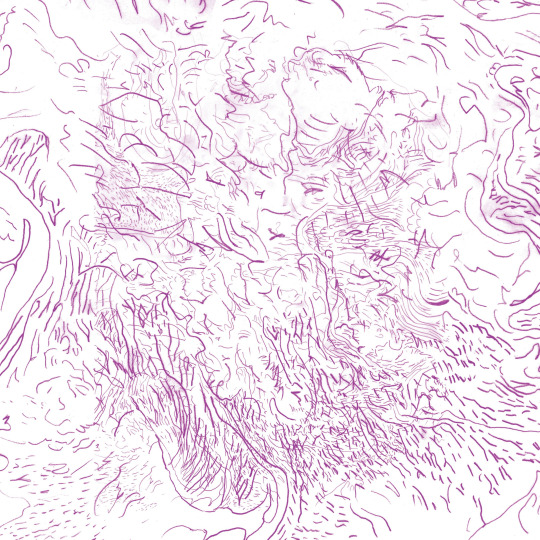
SILY: What's the story behind the album art?
TS: The album artwork and design are by the supremely talented Paul Camo. We’ve known each other for many years but only started working on projects together quite recently. This is the second sleeve he’s designed for one of my projects, the first being the Okumu, Herbert, Skinner Trio album Undone: Live at The Crypt released via Vinyl Factory in 2019.
I didn’t give Paul any specific direction; rather, I was more interested in him having complete freedom, to see how he reacted to the music creatively and allowing that to dictate the direction we took. Talking regularly with him and throwing ideas around was a very important part of the process as a whole in creating this record, and I feel like the artwork informs the music as much as vice versa, to the point where he’s now become a part of the group! Paul is a fantastic DJ and selector with a vast knowledge of all music but with a keen ear for deep jazz and improvised music. He performed with us on CDJs and samples at Church of Sound back in September. He has a regular show on NTS called We Are… which is well worth checking out. In addition to that, he runs Margate Radio (Margate is a town on the Kent coast where he is based) and is very active in the local music and art scene there.
SILY: Are you playing these songs live?
TS: We played one show in London at Church of Sound in September, and hopefully, we’ll get a chance to play some more shows next year. There are some potential opportunities on the horizon.
SILY: What's next for you?
TS: A tour across the US with The Smile that will take us right up to Christmas. I’ve started writing material for a second Bishara record. Plus, there are a few other album projects and collaborations in the works.
SILY: What have you been listening to, reading, and watching lately?
TS: Music (in no particular order): Sam Gendel, Armand Hammer, billy woods, Elucid, Low, Ingram Marshall, Robert Stillman, Loraine James, Joe Lovano’s Trio Tapestry, Julius Hemphill, Earl Sweatshirt, Coby Sey, Mica Levi, Moin, Aaron Dilloway, Lucrecia Dalt, Ohbliv, Jaimie Branch, keiyaA, Henry Threadgill, Tara Clerkin Trio, Charles Stepney, Rotary Connection, Jeanne Lee, The Beatles, Broadcast… I could go on, but we’d be here all day.
Books: The History of Bones by John Lurie and The Passengers by Will Ashon.
Film: The Hand of God by Paolo Sorrentino.
youtube
#tom skinner#interviews#brownswood#international anthem#nonesuch#brilliant corners#shabaka hutchings#voices of bishara#alex kurunis#sons of kemet#the smile#hello skinny#brownswood recordings#nonesuch records#abdul wadud#by myself#played twice#tony williams#life time#nubya garcia#kareem dayes#tom herbert#André Baumecker#bishara#miles davis#spring#blue note#john coltrane#ornette coleman#thelonious monk
5 notes
·
View notes
Text
Tom Skinner — Voices of Bishara (Brownswood Recordings / International Anthem / Nonesuch)

Voices of Bishara by Tom Skinner
Drummer Tom Skinner has risen to prominence in the last 18 months via The Smile, his new band with Radiohead’s Thom Yorke and Jonny Greenwood. However, he’s been a member of jazz/Afrobeat quartet Sons of Kemet for over a decade, plus he’s released a couple of colorful albums under the moniker Hello Skinny. Voices of Bishara is Skinner’s debut under his own name, which brings all of his experience to bear into a succinct 28-minute release. It draws primarily on jazz and instrumental hip-hop to create a mostly groove-focused listen that sporadically ventures in wilder, freer territories.
Before getting into the music itself, the story behind the album’s genesis is well worth recounting. Skinner and his circle of musician friends get together on a regular basis for what they call “Played Twice” sessions, in which they play a classic jazz album in full on the Brilliant Corners venue’s audiophile system, then collectively improvise a musical response. In the case of Voices of Bishara, the inspiration was Tony Williams’ album Life Time (Blue Note, 1964). Skinner’s ensemble, featuring Kareem Dayes on cello, Tom Herbert on bass, Nubya Garcia on tenor sax and flute, and Shabaka Hutchings on tenor sax and bass clarinet, recorded the album in a day, then Skinner got to work editing the results into the album’s final form.
“Bishara” is easily the disc’s wildest cut, prompting some cacophonous blowing from Hutchings. “The Day After Tomorrow” is also loose, but in a completely different way, its lugubrious threads of sax and cello perpetually unspooling despite Skinner’s drums attempting to bring them into check. “Red 2” mines a similar seam, but in a more sinister, glowering way, enlivened by some mellifluous flute playing. Elsewhere the focus is on Skinner’s tight beat making, which on occasion seems to have been cut and pasted after the performance into looped grooves. This is especially apparent on “Voices (of the Past),” which has the most obvious post-production input and features jazz guitar samples. The bass and drums on “The Journey” are largely unwavering in their focus, over which the saxes blurt pointillistic figures. “Quiet As It’s Kept” rounds out the disc nicely will some of the musicians’ most swinging and lively ensemble playing. Here’s hoping this is just the first of many releases for this musical collective.
Tim Clarke
#tom skinner#voices of bishara#brownswood recordings#international anthem#tim clarke#album review#dusted magazine#sons of kemet#the smile#hello skinny#jazz#tony williams#kareem days#tom herbert#nubya garcia#shabaka hutchings#hip hop#fusion
4 notes
·
View notes
Text
All Rise to internet International Anthem.
youtube
2 notes
·
View notes
Photo




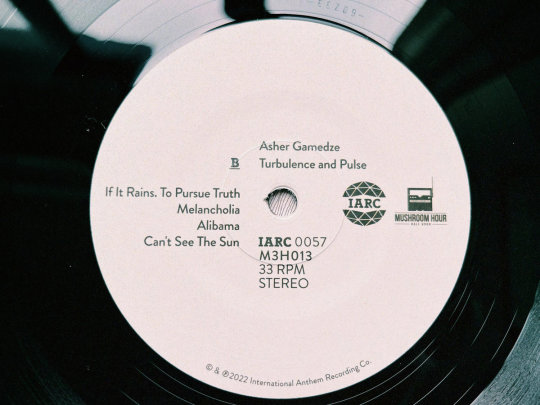


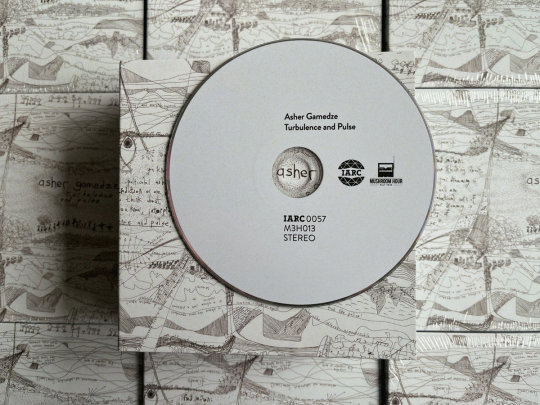


Asher Gamedze, Turbulence and Pulse, (One Drop color vinyl 2xLP, Classic Black gatefold 2xLP, CD), IARC0057, International Anthem, 2023. Artwork by Asher Gamedze. Essay and Diagram by Thulile Gamedze. Design by Naadira Patel
Plus: Asher Gamedze – Turbulence and Pulse, (youtu), Film made by Dylan Valley, 2023. In conversation: Asher Gamedze, Leigh-Ann Naidoo and Marcus Solomon. In studio: Asher Gamedze, Robin Fassie, Thembinkosi Mavimbela, Buddy Wells, Carl Roberts. In Cairo: Asher Gamedze, Alan Bishop, Adham Zidan, Cherif El Masri, Maurice Louca [shot by Maged Nader]
#graphic design#art#music#music album#vinyl#cd#video#drawing#illustration#cover#back cover#asher gamedze#thulile gamedze#naadira patel#leigh ann naidoo#marcus solomon#dylan valley#international anthem#2020s
28 notes
·
View notes
Text
Co w jazzie piszczy [sezon 2 odcinek 15]
premierowa emisja 24 kwietnia 2024 – 18:00
Graliśmy:
Vårterminen Trio “If I Should Lose You” z albumu “Vårterminen”
Big Fish “Seule mais pas trop” z albumu “Big Fish”
Prospectus” Navette Spaciale” z albumu “Météorie”
Ruth Goller “Next timeI keep my hands down” z albumu “Skyllumina” – International Anthem
Cassie Kinoshi’s Seed “I” z albumu “gratitude” – International Anthem
Randi…

View On WordPress
#According To The Sound#ACT Music#Adam Parry-Davies#Andreas Werliin#Angelica Sanchez#Big Fish#Cassie Kinoshi#Chad Taylor#Co w jazzie piszczy#Criss Cross Jazz#David Leon#Fire!#Intakt Records#International Anthem#Johan Berthling#John Beasley#Léa Ciechelski#Losen Records#Ma Records#Magnus Lindgren#Manuel Valera#Martin Fabricius#Mats Gustafsson#Matt Brewer#Michael Thomas#Obed Calvaire#Patrick Case#PRINT#Prospectus#Pyroclastic Records
0 notes
Photo
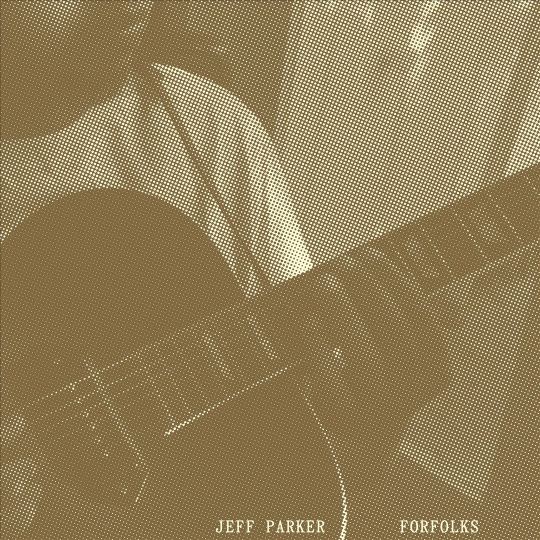
Jeff Parker — Forfolks.
2021 : International Anthem.
! acquire the album ★ attach a coffee !
#jazz#improvised music#jazz guitar#electronic music#ambient music#soul jazz#acoustic music#folk music#jeff parker#2021#international anthem#2020s#2020s jazz
13 notes
·
View notes
Text
Ariel Kalma, Jeremiah Chiu & Marta Sofia Honer - The Closest Thing to Silence
In August 2022, Australia-based, French born fourth-world music legend Ariel Kalma was invited to participate in BBC Radio 3’s Late Junction series of special collaborations. The program pairs artists who have not previously worked together to create new music cooperatively.
Kalma was quick to suggest working with two musicians whom he had never met – International Anthem recording artists Jeremiah Chiu & Marta Sofia Honer, whose critically-acclaimed duo debut 'Recordings from the Åland Islands' had been released just a few months earlier. An invitation was sent to Chiu and Honer, which was received with great enthusiasm, as Chiu had long been a fan of Kalma’s work, even citing him as a major influence on his approach to electronic music composition.
The essential structure of the Late Junction collaboration was that the artists would work together to create around twenty minutes of music. They began passing music back and forth, some that Kalma had started, and some that Honer & Chiu had started, with each adding to or editing the track before returning it to the other. The music would only go back and forth a few times before being finalized.
After meeting their twenty minute goal for the program (four pieces total), the three musicians were satisfied in what they would present and sent along their work to the producers of Late Junction. However, there was a nagging suspicion that this wasn’t the end of the story. There were several pieces that they had nearly completed but that weren’t sent for inclusion in the radio program, and there were many ideas for refining those pieces that had. With this in mind Kalma, Chiu and Honer agreed that they would continue to work together to try to push the music further. The freshly minted trio felt like there was much more to be said and more work to be done. The Late Junction program was broadcast in September of 2022. Simultaneously, Kalma, Chiu and Honer began expanding upon the music they had started for the purpose of the broadcast, working diligently on the music for several months.
Their collective approach to this work was born in improvisation and realized via collage-based editing. The end result brings several distinct musical moments — recorded sometimes decades apart — into conversation with one another, forming new narratives from building blocks of old ones. There are snippets of improvised playing from each musician, edited together with recordings that Kalma had made in the 70s at GRM, and even moments of audio notes — like Kalma explaining his ideas — that would make it into the final mixes.
Ultimately, the collection of music highlights the work of all three musicians, intertwining the contextual immersion heard on Chiu & Honer’s 'Recordings from the Åland Islands' with an intergenerational reverence for (and the undeniable presence of) Kalma’s decades-spanning body of work. It is work that has definitively enshrined him as one of the true, transcendent pioneers and sages of new age and fourth-world music. That reverence is affirmed by the album title chosen by the group — "The Closest Thing to Silence" — which is taken from a quote by Kalma included in a documentary by RVNG Intl (as part of their release of the 2014 compendium/retrospective An Evolutionary Music). Perhaps coincidental, Kalma’s quote was a slight modulation of a legendary ECM Records motto, as he said: “Music is the closest thing to silence.”
All Compositions by Ariel Kalma, Jeremiah Chiu, and Marta Sofia Honer.
Design and layout by Will Work for Good & Some All None.
Photography by Alejandro Ayala & Ama Kalma.
#ariel kalma#jeremiah chiu#marta sofia honer#electronic#ambient#jazz#new age#fourth world#2024#international anthem#Bandcamp
3 notes
·
View notes
Text
youtube
Here's Makaya McCraven's “The Fours,” from his new album, In These Times, out September 23 on International Anthem / Nonesuch / XL Recordings. The video was directed by Ryosuke Tanzawa.
McCraven will perform music from the album at Public Records in Brooklyn next Monday, September 19, with a special, all-star line-up including Junius Paul, Brandee Younger, De’Sean Jones and the string quartet from the album: Marta Sofia Honer, Macie Stewart, Zara Zaharieva, and Lia Kohl.
#makaya mccraven#the fours#in these times#jazz#international anthem#xl recordings#nonesuch#nonesuch records#Youtube
14 notes
·
View notes